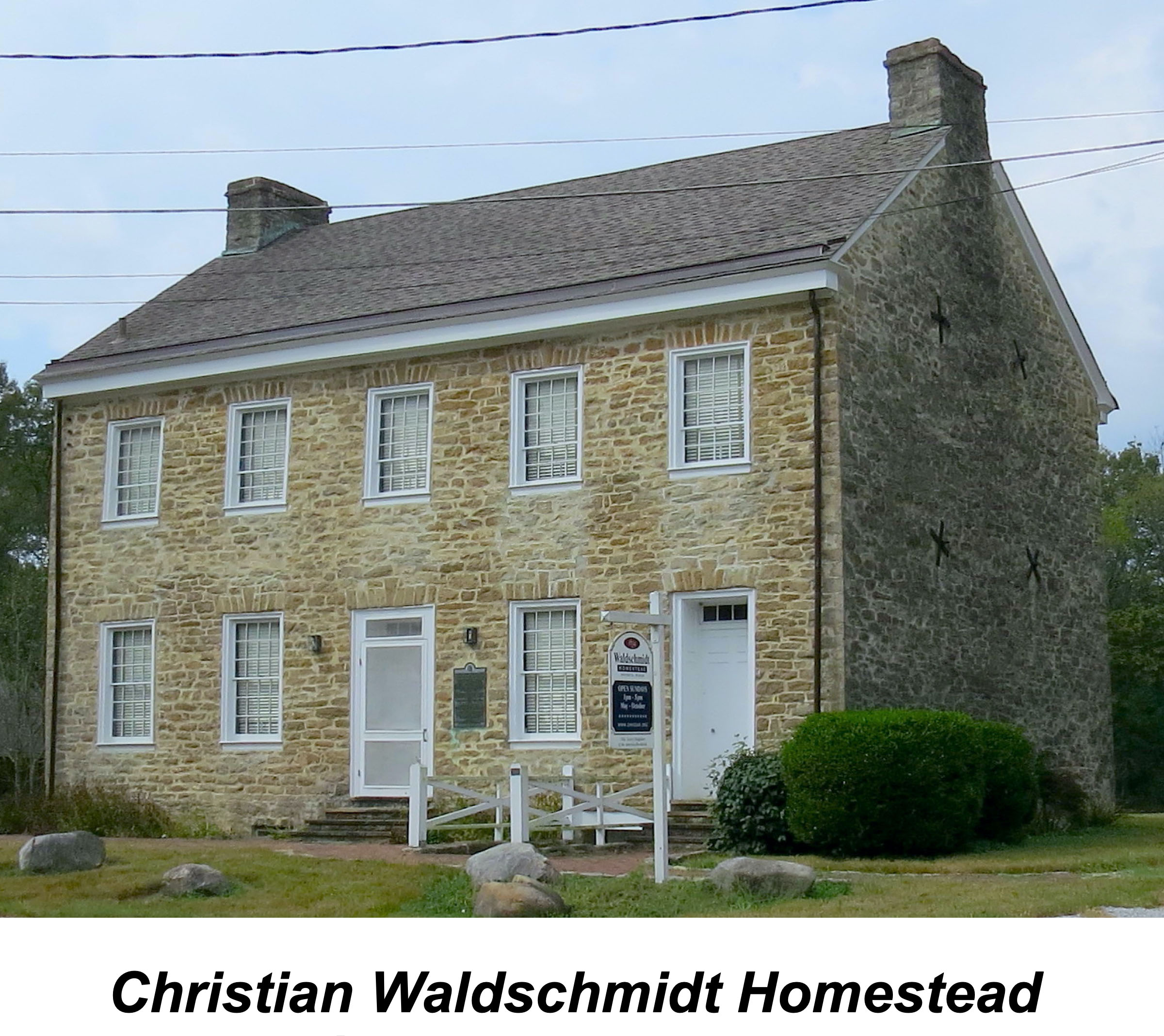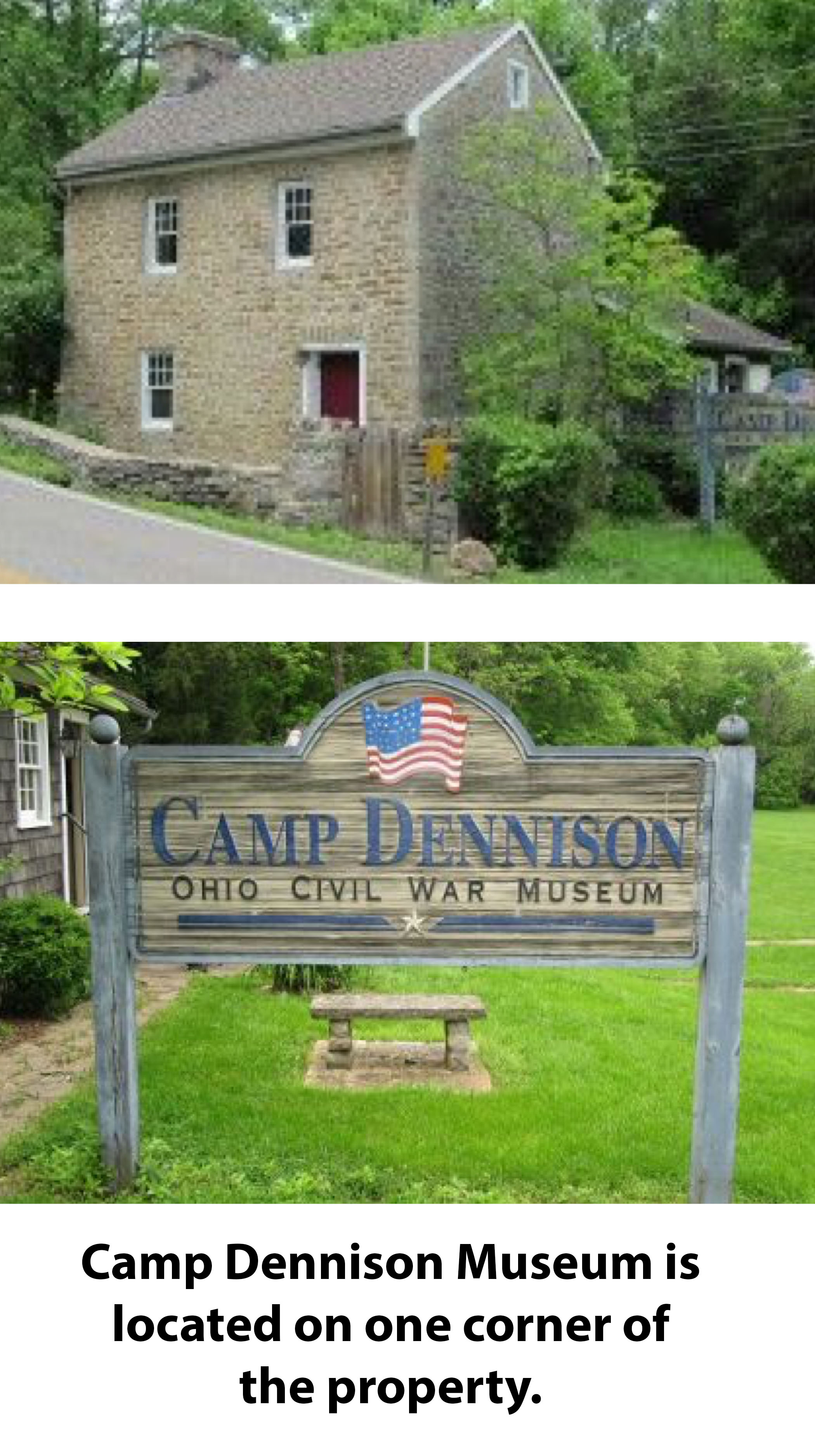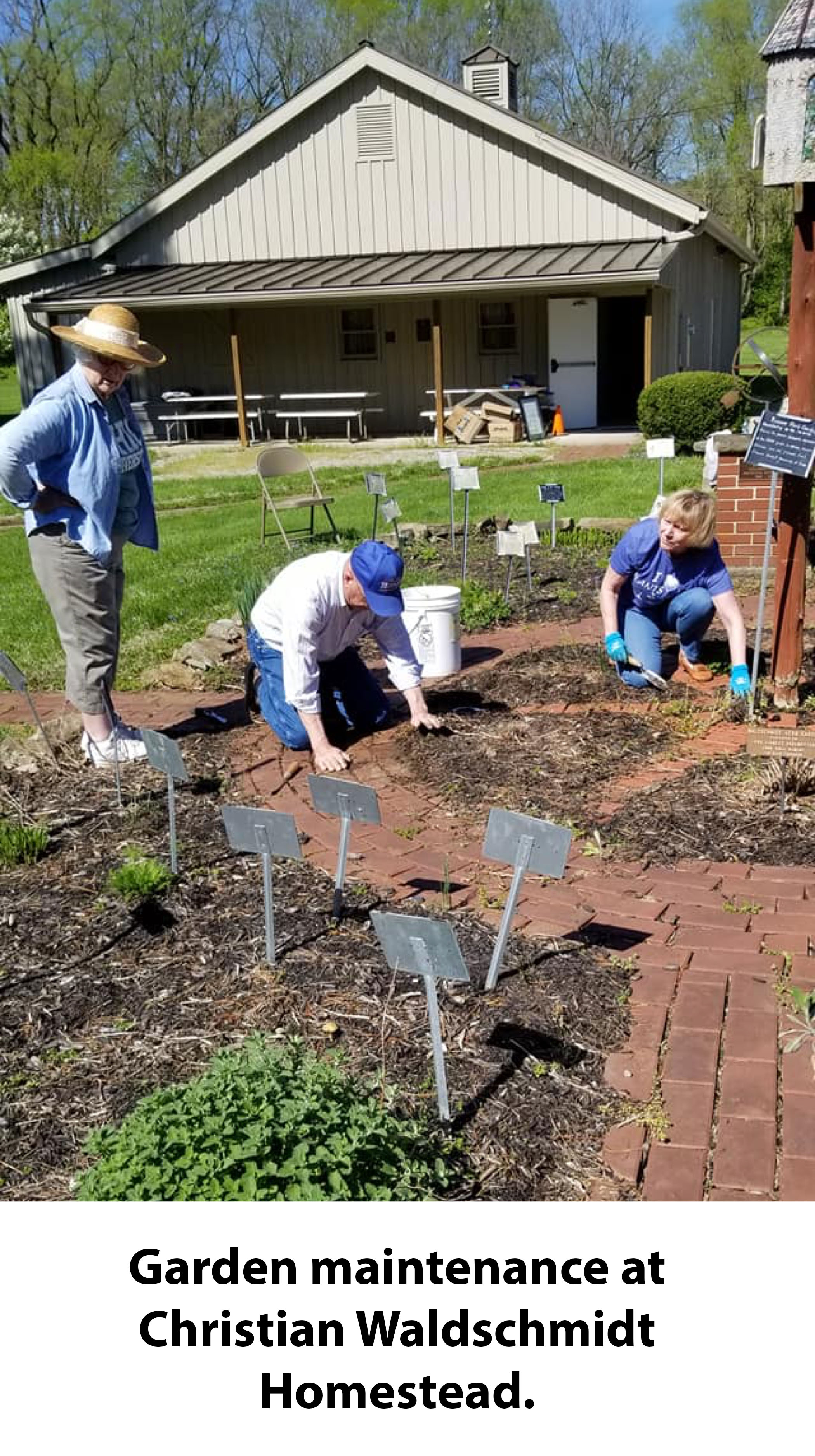
Welcome to the Christian Waldschmidt Homestead
& Camp Dennison Museum
A Historic Property owned and Maintained
by the Ohio State Society DAR
The Christian Waldschmidt Homestead is open for public tours on Sunday afternoons from July 6 through October 26, 2025. Our Christmas Open House is on December 6th and 7th, 2025. Tours begin at 1pm, and the last tour of the day is at 4pm.
 Before you visit, please check our Facebook page for any updates to the opening day or other unexpected closures.
Before you visit, please check our Facebook page for any updates to the opening day or other unexpected closures.
Please email us with questions about the Christian Waldschmidt Homestead or the Camp Dennison Museum status.
In 1794, Christian Waldschmidt, a veteran of the American Revolution, ventured to a site near the Little Miami River and established a new settlement called New Germany. By 1804, with his home completed, the Waldschmidts and many other families were living in a community that encouraged enterprise, ingenuity, industriousness, and commerce. Waldschmidt was a businessman who established a store, a church, a school, lumber mill, paper mill, grist mill, fulling mill, and a distillery; and supported others in their pursuit of their own businesses and homesteads.
During the Civil War, the Waldschmidt Homestead and surrounding grounds were part of Camp Dennison. This property was used primarily as a mustering center allowing for the recruiting and training of troops. It also served as a hospital after the Battle of Shiloh. The camp was named in honor of Ohio Governor William Dennison. At one time the main house served as the headquarters for General Joshua Bates. The smaller stone structure served as the guard house and now houses our Civil War Museum.
Over the years, the Homestead fell into disrepair and near ruin. In 1941, Mr. and Mrs. Chester Kroger of Cincinnati, owners of the property since the mid 1930s, gave the Homestead and $5,000 to the Ohio State Society Daughters of the American Revolution. Restoration of the Homestead began immediately but was curtailed by the start of World War II. It wasn’t until 1953 that the Homestead was dedicated and opened to the public as a museum.
In 1989, the Ohio Society completed the construction of the Memorial Barn honoring the bicentennial of the Northwest Ordinance. The Welcome Center, as it is now known, houses an extensive collection of primitive stone cutting and farm tools. Our vehicle collection of a Conestoga wagon, President Garfield’s surrey, and a farm wagon used in the Civil War can be found in this building.  The Welcome Center serves as a gathering place for meetings, special events, and programs for Ohio DAR members. It is available for use by other groups for their events.
The Welcome Center serves as a gathering place for meetings, special events, and programs for Ohio DAR members. It is available for use by other groups for their events.
The main house on the Christian Waldschmidt Homestead is considered one of the best examples of Pennsylvania Dutch architecture west of the Alleghenies. Since the opening of the Homestead, Ohio DAR members have researched and collected pieces of early Americana. The furnishings include many original pieces used by the family.
The Ohio DAR believes the Homestead has a unique heritage which should be preserved for future generations. We welcome the challenge of assisting in the development of a greater understanding and appreciation for the past. Volunteer docents guide visitors through the entire Homestead and grounds.
The Homestead provides various learning experiences for the youth of the community. These activities foster a love of history and promote the ideals of the men and women who achieved American independence. Tours with age-appropriate activities are available to schools, scouts, and other youth groups. Docents are also available to give programs off-site.
The Boy Scout American Heritage Merit Badge may be earned through a special program offered annually at the Homestead. This one-session program meets all the requirements of this badge. Sessions are usually scheduled in November.

